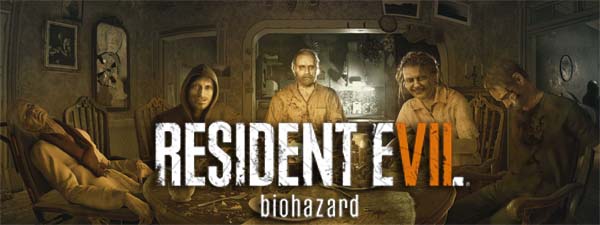
It's been a long time since I've given a crap about Resident Evil. I loved the classic Resident Evil games. The Play Station original is a foundational game for me, and jump-started my interest in horror and the macabre. I felt like the series jumped the shark with Resident Evil 4, however, and my interest in the series tanked with its abandonment of horror in favor of schlockey action-shooter gameplay. I played through Resident Evil 5's co-op with a friend, but didn't really enjoy myself, and after playing the abysmal demo for RE6, I skipped that one entirely.
So I was genuinely excited by Resident Evil VII: Biohazard. The popularity of first-person horror games, and the phenomenon that was P.T. / Silent Hills (not to mention the success of Resident Evil REmastered on Steam) obviously seems to have kicked Capcom in the butt and reminded them that there is still an audience for genuine horror games - an audience that mainstream gaming has neglected for most of the last decade. I'm not sure if development of REVII started as a response to P.T., or if it was already in the works following the success of games like Amnesia, Outlast, and Alien: Isolation. Either way, it's good to see major publishers embracing the genre again.
The family's new - but familiar - mansion
This new Resident Evil really does go back to the franchise's roots. The early hours of the game actually feel a lot like a combination of the original Resident Evil and Resident Evil 3: Nemesis, but updated with a first-person camera and a lot of modern horror contrivances. Long-time fans of the series will recognize the safe rooms and item-boxes. The classic health status indicator is now part of a watch on the character's wrist that you can see whenever you pull up your inventory. There's a foyer with a balcony. Doors are locked by silly, esoteric puzzle mechanisms that require themed keys, crests or various other stand-ins for keys. There's even a booby-trapped shotgun to tease you at the start of the game. Some of these elements of design feel appropriate, while other ham-fisted call-backs admittedly feel like the developers were trying too hard.
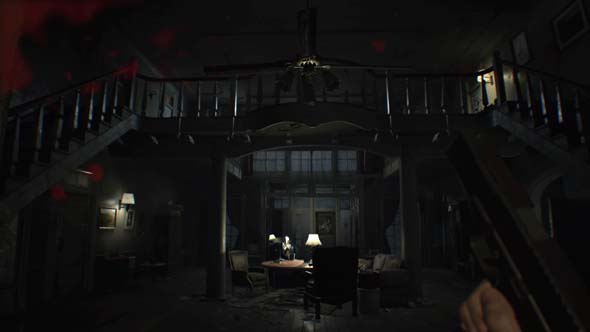
The mansion is new, but has many call-backs to the first game.
The map is well-designed, with its claustrophobic hallways, shortcuts, and lots of visual detail. Lighting is excellent, though the game is a bit too dark at the recommended brightness level (at least without a flashlight), and it becomes washed-out at higher brightness settings. Sound design is also quite exceptional, with the game giving great audio feedback (especially for the pursing stalkers). I also like a lot of the little details, particularly how using a key to unlock a door takes a small amount of time, during which you are vulnerable.
The family also makes for some excellent antagonists, especially compared to the likes of stupid, campy villains like Albert Wesker and Salazar. These villains have a lot of character, and there's enough detail in the mansion to give a sense of who these people might have been before they went off the deep end: the collectible football bobbleheads, for example. And on top of that, they are genuinely disturbing and threatening, and the whole game would probably be scary enough if you just spent the whole time avoiding them and trying to escape their murder house.
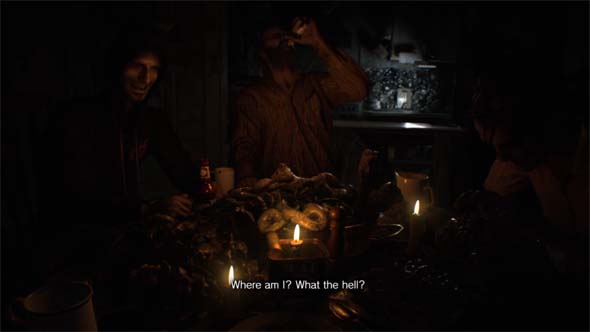
The family makes for genuinely disturbing villains that put RE's earlier villains to shame.
The save system is kind of an odd hybrid of the classic save system and more modern checkpoint systems. The logistics of the classic system have been scaled back, as you no longer require a consumable item (ink ribbon) to manually save (at least not on the default difficulty). But the game will also checkpoint you at certain points, and it maintains a single autosave slot with your checkpointed progress. So if you die to one of the obnoxiously-hard bosses, you don't have to go back a whole hour to your last manual save; instead, you get to restart at the most recent checkpoint.
However, the manual saves still have value, because Biohazard is structurally very similar to the original Resident Evil - both superficially and in terms of gameplay... [More]
a4e07563-fcc1-4e63-88fa-f5d8f517792b|1|5.0
Tags:Resident Evil, Biohazard, Resident Evil 7: Biohazard, Capcom, horror, survival horror, shooter, first person, inventory, resource management, mansion, autosave, save system, puzzle, logistics
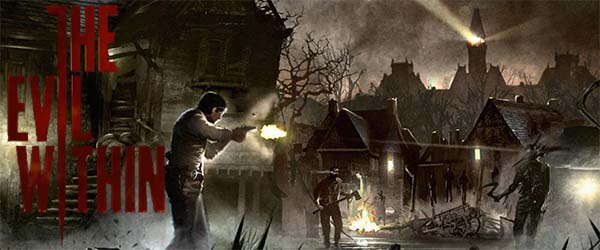
I had some really high hopes for The Evil Within. It looked like Shinji Mikami was trying to bridge a gap between the survival horror trappings of the original Resident Evil and the more action-oriented shooter gameplay style of Resident Evil 4. The former was a slower-paced game that emphasized open-ended exploration, puzzle-solving, and resource management in a horror setting. The latter game dropped most of its horror ambitions in favor of totally campy action shooter schlock. Early trailers for Evil Within looked it would hit a good balance between the two styles.
I didn't jump right on this game at release because I saw some mediocre reviews and heard that it failed to deliver on its promises. After booting up the game, waiting for an hour-and-a-half for the 4.7 GB update file to install (what did this update do? Tack on a whole new game?!), navigating the slick title menu, and then proceeding through the first few chapters, I verified that the game does indeed fail considerably as a horror game.
But it is worth noting that The Evil Within (unlike Resident Evil 4 and Shadows of the Damned) does seem to be making a legitimate attempt at being a horror game, rather than just an action shooter with zombies. It just doesn't really succeed at this goal.
Early levels in particular are full of exceptional lighting and ambient effects that really help to build an ominous atmosphere. The addition of stealth mechanics does put a greater emphasis on avoiding direct conflict and encouraging a more cautious approach (compared to RE4's guns-a-blazing attitude).
I've heard a lot of complaints that this game's story doesn't make sense and is stupid. I think most of these people didn't finish the game (or at least get to the point around chapter 10 where the story is explained). The story makes sense. The problem is that the game is very disjoint and never really builds on these foundations.
The game's narrative causes the character to jump (seemingly at random) from place to place - even within a single chapter. Each new place quickly starts to feel like a narrow-scope set-piece for an action scene rather than any kind of terrifying world. The game and individual chapters lack narrative cohesion and unifying design. There's very little opportunity for the game to allow open exploration or atmosphere-building, since the whole game feels like a collection of randomly-thrown-together set pieces and battle puzzles. So even though the overall story makes sense (in retrospect), the individual scene and level-progression doesn't.
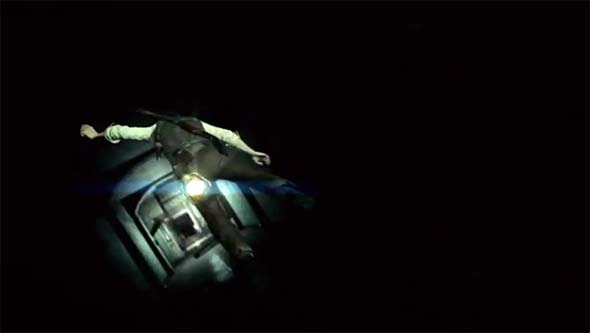
Reality is being warped, resulting in some trippy effects, but a very disjoint sense of progression.
The designers seem to be trying to mimic the Otherworld of Silent Hill, but the transition is so jarring, and the places feel so completely unrelated to one another, that it just doesn't work. You get through a pain in the ass, trap-infested maze while dodging monsters, only to be teleported to another maze area when you reach the exit! "OK, we're done with this area, let's just go to some other random challenge room." There's no sense of ever achieving anything because you're rarely ever allowed to actually go to the places that you are trying so hard to get to. And once that sense of futility sets in, any fear starts to dissipate. You're no longer concerned with getting out or saving yourself or even progressing the story because you realize that you can't achieve anything without the game giving it to you.
It's a real shame too, because some of these reality-warping mind tricks might be very effective if they were organically integrated into the flow of the game. I especially liked one bit in which a character falls down a bottomless pit, only to have the whole world re-orient itself so that the walls become the floor. So instead of falling to his death, he harmlessly rolls to a stop. Unfortunately, these effects lack subtly and feel random... [More]
ce16d91f-e2af-4e72-9f81-822136d27e6a|2|3.5
Tags:The Evil Within, Bethesda, Tango Gameworks, survival horror, action, shooter, stealth, Sebastian Castellanos, zombies, mental institution, Shinji Mikami, Resident Evil 4
Grand Theft Auto V is a game that does not get off on the right foot at all. The intro tutorial is a complete mess.
Remember how in Grand Theft Auto IV, the protagonist was introduced in a cutscene during the opening credits? We learn about his personality and motivations, and why he is coming to America. Then you get off the boat, gameplay begins, and you are immediately given a simple driving tutorial in which you taxi your drunk cousin two blocks to his shithole apartment, all the while learning more about the characters and the game world itself. Then you do some simple taxi missions that let you practice driving while simultaneously letting you learn the layout of the city and soak in the environment. Then you start getting asked to beat people up and throw bricks through store windows and get tutorialized on how to fight, shoot, and do other advanced mechanics. And during all this time, the game slowly builds up a hatred and distrust for the criminals that you are working for while simultaneously laying the foundations of the game's depressing-but-exceptionally-introspective plot.
Remember all that? Remember how well that game was paced? Remember how the tutorials always showed up at appropriate times, explained a mechanic during non-interactive cutscenes so that you can pay attention to the instructions, then lets you practice the mechanic while it's fresh in your memory? Remember how well it slowly built up the important mechanics one at a time - as they became relevant - while also immersing you in the game world and building up its story to a climactic closing of the first act? Yeah, that was great game design, wasn't it?
Well, GTA V has none of that.
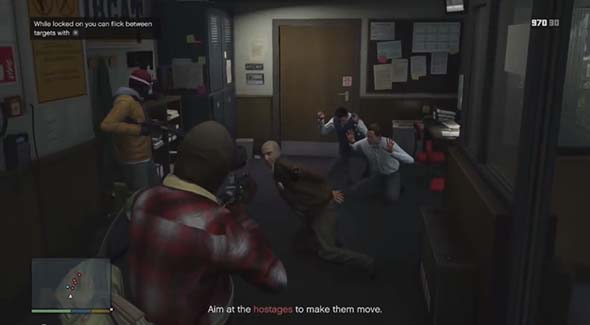
An almost unbearable tutorial.
The intro tutorial literally throws the player into the middle of a bank robbery in progress. You have no idea who your character is, why he's robbing a bank, who your companions are, or what the "plan" that everybody keeps telling you to "stick to" is. Then it puts an assault rifle in your hands, and a tiny little box pops up in the corner of the screen with 6-point font telling you what to do while you're trying to do the thing that it's telling you to do - and hopefully not doing the wrong thing. And then they stick you in the middle of a gunfight with an entire small army of police, and these barely-visible text popups try to tell you how to use the cover mechanics, switch weapons, and trigger super powers - all while you're being shot at. Then you go for hours before using many of these mechanics again, so you forget them all because you had zero time to practice and remember them, and they were all thrown at you at once.
Table of contents
[More]
fb300517-533f-4eb1-8850-a24213b48628|3|3.7
Tags:Grand Theft Auto, Grand Theft Auto V, Rockstar Games, Rockstar North, Take-Two Interactive, San Andreas, Los Santos, Franklin Clinton, Michael De Santa, Michael Townley, Trevor Phillips, Achievement unlocked, action, shooter, driving, open world

Crystal Dynamics really missed the point with this game. It seems like the creative team started the project with one creative vision to make a “lost on an island adventure story”, and then early on, they all got fired and replaced with people who were instructed by corporate overlords to make “Uncharted with a girl” and the final product turned into a mindless shooter.
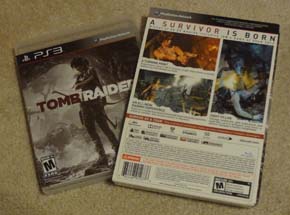
The only things you'll be "surviving" for most of this game is bullets and explosions.
The game is called "Tomb Raider”, but the bulk of the game is an action shooter instead of exploring tombs.
The tagline on the back of the box says “A survivor is born”, and the first objective in the game is to find a bow and kill a deer for dinner, but then you don’t ever have to hunt or treat wounds or take refuge from the elements or do any other “survival” things.
A sheer majority of the game is shooting hordes of enemies in tedious gunfight after tedious gunfight after tedious gunfight. Maybe over the course of the game, you’ll stumble across a tomb or two. But if you do, it’s just a 15-minute detour while you solve a single environmental/platforming puzzle in order to collect an arbitrary and useless reward. The rest of your time will be spent running around the levels that you just cleared of bad guys and collecting random items.
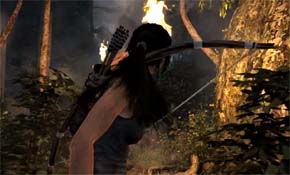
Hair probably isn't the part of Lara's anatomy that many ... um ... "fans" were hoping to see benefit from real-time physics, but then again, at least this is something innovative.
Table of Contents
[More]
This review was originally published 05/15/2011 on Game Observer (now defunct as of 05/13/2014). It has been republished here for archival purposes.
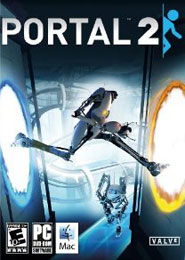
Yes GladOS, we brought you back to life because we really do love to test!
To be perfectly honest, I wasn’t looking forward to this game. I love the first Portal, as it was about as close to "perfect" as any game has ever come, but I couldn’t help but fear that Valve might turn this into a franchise, and in doing so, some of the allure of the game would be lost. But the game was released, and it is a triumph. Mostly.
Apparently, a very long time has passed since the first game. The Enrichment Center is very different. Under the care of the watchful AI, Wheatley, the entire facility has been slowly falling apart. The degrading, decrepit test chambers make for much more interesting visuals than the sterile, white and gray chambers of the first game. They are now overgrown with weeds and vines, panels are falling off the walls, broken glass litters the floors, and fallen and bent metal beams and girders obstruct some of your paths. It’s just too bad that with all the debris and vegetation littering the environment, that none of it is interactive. It slightly breaks the immersion when you walk through dangling leaves and they don’t react to your passing at all.
There is a lot of visual variety in this game. You travel through the dilapidated chambers of the early game until the facility begins to rebuild itself. You watch it piece itself back together. Then you get to travel through the deepest guts of Aperture Science. And finally, you come back to see the test chambers tear themselves apart again
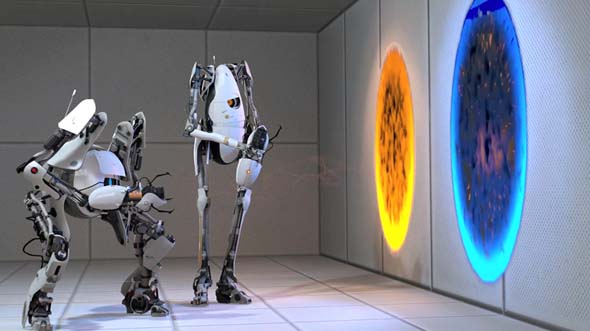
The co-op puzzles are fun, but not terribly replayable. [More]
9e4a4a6b-d12e-4d91-8298-afef9867183b|2|3.0
Tags:Portal 2, review, Portal, Valve, Electronic Arts, EA, Steam, platformer, puzzle, shooter, PC, PS3, PSN, GladOS, hacking, cyber-attack, cloud save, XBox 360
|

| 12 | | | | | | | 60 | | 11 | | | | | | | 55 | | 10 | | | | | | | 50 | | 09 | | | | | | | 45 | | 08 | | | | | | | 40 | | 07 | | | | | | | 35 | | 06 | | | | | | | 30 | | 05 | | | | | | | 25 | | 04 | | | | | | | 20 | | 03 | | | | | | | 15 | | 02 | | | | | | | 10 | | 01 | | | | | | | 05 |
|